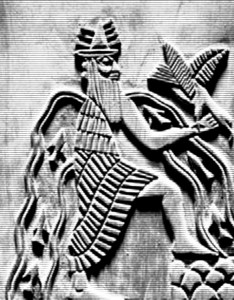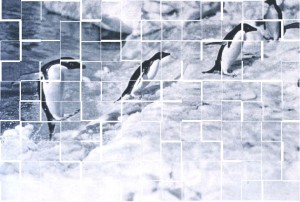It’s been over two years since my last post on Ancient Sumerian resources, and I’ve found several new things of interest. Personally, it’s amazing to see how modern media outlets like films and television and gaming are incorporating ancient wisdom into the art of today. It is both invigorating and encouraging to see that we’re learning from the past in order to have a more plentiful and prosperous future.
The Electronic Text Corpus of Sumerian Literature (ETCSL) is a phenomenal place to start. It is actually run by Oxford and the translations and transliterations are beyond outstanding. If you’re wondering, a translation is a text which is converted into your readable or listenable language…and a transliteration is a text which is converted into your “Alphabet” but it is still in the old language. So if you ever wanted to learn how to speak Sumerian, you would probably want to look at the transliteration. One text which I think you will find interesting is part of the Epic of Gilgamesh. In this excerpt, Gilgamesh and Enkidu engage a powerful being known as Huwawa in battle.
Even though the corpus is extensive, it is by no means an exhaustive compilation of all the Sumerian knowledge out there. A must-read book named, “Myths from Mesopotamia” was written by Stephanie Dalley and the first translation on Atrahasis which is under 20 pages long is simply mind-blowing. This book was originally translated and compiled in the late 1980’s but it’s been revised several times since then. The version I’m reading is from 2008. This book is another Oxford publication.
An excellent place to start for learning about the Sumerians is a site called, “VirtualSecrets.com” they have an extensive Flash Card section which you can print out and learn how to recognize the Sumerian cuneiform words and symbols. Here’s a fun fact which I think is simply awesome. Did you know that many “Sumerian” texts which we think are written in the Sumerian language…are actually written in the Akkadian language – they’re just using the Sumerian cuneiform style!
“Indo-Sumerian Seals Deciphered” is easily one of my favorite books of all-time. It is so dense with information that I’ve gone through it several times and always find out something new. It was published in 1925 and written by L.A. Waddell. This book is constantly reprinted so it’s easy to find. You will find out how the cultures of Asia-Minor and ancient Sumer mingled to create something new. Anyone who thinks their culture is completely, “independent” from the other cultures of the world might get frustrated by this book. It makes connections which transcend normal familial thinking and it is an absolute joy to read.
No compilation of Sumerian resources would be even remotely complete without a reference to Sir Leonard Woolley. His book, “Excavations at Ur” is filled with both diagrams and text on the Sumerians and Akkadians. His words are eloquent and easy to read for the modern reader. Even though “Excavations at Ur” was first published in 1954, it feels like he is speaking today. Woolley’s words resonate in the mind of the reader as if you’re part of one of his archeological digs. Although Woolley’s works deal more with societal, historical and archeological evidence on the ancient Sumerians, they provide a much needed context in order to concretely grasp the depth and reality of the Sumerians. Otherwise, one may put the Sumerians on a pedestal or in a special box…which is completely unnecessary for this very real and very historically important culture. Never let someone try and trick you into thinking the Sumerians are a “theoretical” culture.
Once the reader has the historical, mythological, societal and relative cultural understanding of the Sumerians…more advanced and scientifically applicable knowledge can be gleaned from the Sumerians. One such piece of the information is the Sumerian contribution to the concept of the number 60, and its relationships to music. Musical Theory and Ancient Cosmology which was written by Ernest G. McClain is a tour-de-force of densely beautiful information. Every single page is jam-packed with knowledge which will buttress and support your understanding of time and music.
Enjoy this compilation and best of luck in your endeavors…whatever they may be.
-Tyler



